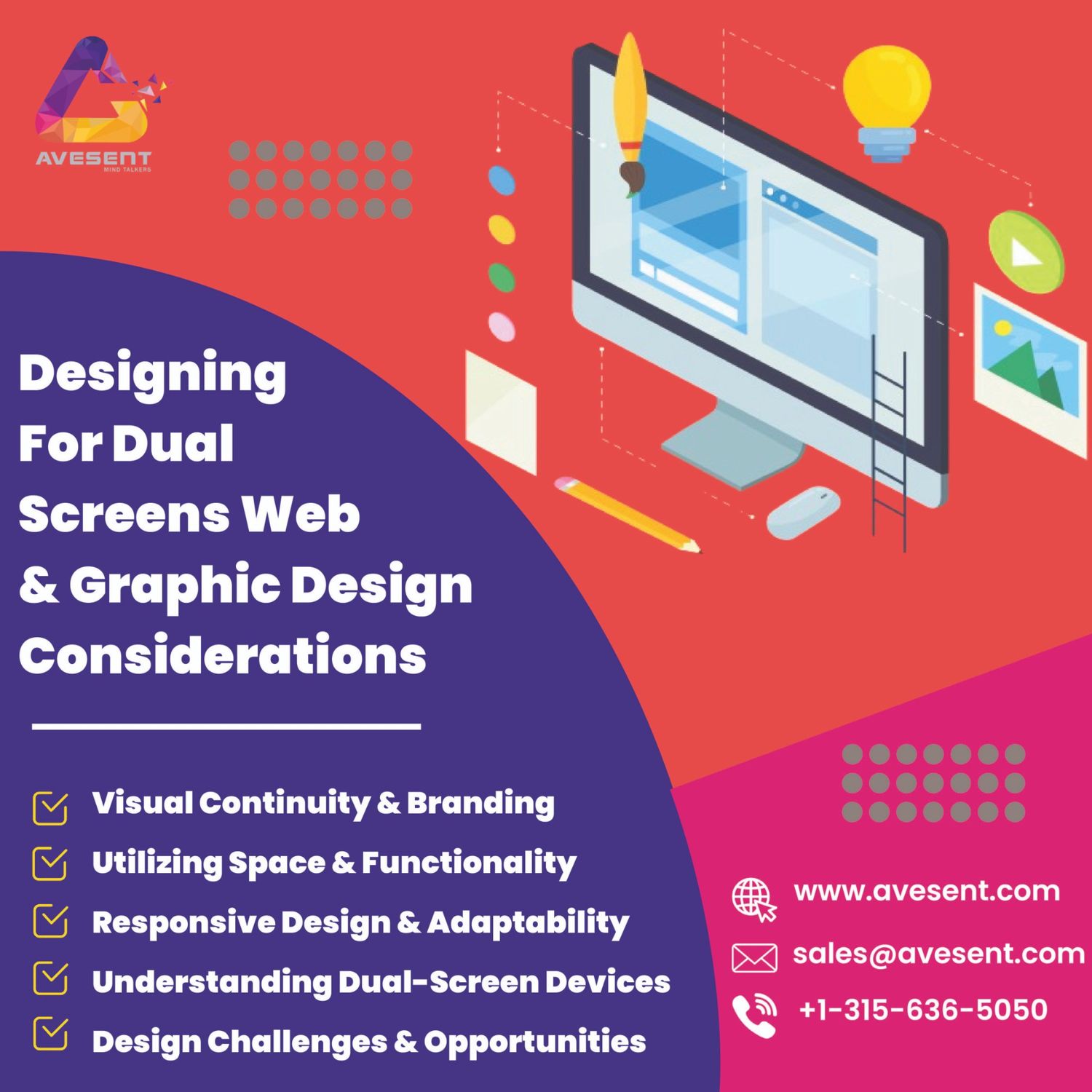As technology continues to evolve, the rise of dual-screen devices presents both opportunities and challenges for web and graphic designers. In the realm of digital marketing, where user experience is paramount, catering to these dual-screen devices becomes crucial. For digital marketing agencies in India, adapting to the nuances of designing for dual screens signifies a strategic approach to meet the ever-changing demands of the modern digital landscape.
Understanding Dual-Screen Devices:
Dual-screen devices encompass a range of gadgets, from foldable smartphones to laptops with secondary screens, offering users an extended canvas for interaction and content consumption.
Design Challenges and Opportunities:
Seamless User Experience: Designers must ensure a seamless transition between screens, offering a cohesive experience as users switch between devices.
Creative Possibilities: Utilizing dual screens opens doors to innovative design layouts and interactive experiences, enhancing engagement.
Responsive Design and Adaptability:
Fluidity in Layouts: Creating responsive designs that adjust fluidly between single and dual-screen displays is imperative for a consistent user experience.
Content Optimization: Optimizing content for different screen sizes while maintaining readability and visual appeal is vital.
Utilizing Space and Functionality:
Content Distribution: Strategically distributing content across screens to optimize readability and usability without overwhelming the user.
Functional Design Elements: Placing interactive elements and functionalities in areas accessible to users across both screens.
Visual Continuity and Branding:
Consistent Branding: Ensuring brand elements, colors, and aesthetics remain consistent across both screens to reinforce brand identity.
Visual Appeal: Designing visually engaging content that captivates users across dual screens.
Enhanced User Interactivity:
Engaging Features: Incorporating interactive features that leverage the dual-screen capabilities to provide unique and immersive experiences.
Gesture-Based Navigation: Implementing intuitive navigation methods optimized for dual-screen devices.
Optimizing for Performance and Speed:
Performance Considerations: Designing efficiently to maintain optimal performance without compromising on user experience.
Page Load Speed: Ensuring quick loading times on both screens to prevent user disengagement.
Testing and Iteration:
User Testing: Conducting thorough testing across various dual-screen devices to gather user feedback and make iterative improvements.
Adapting to User Behavior: Iterating designs based on user behavior and preferences on dual screens.
Role of Digital Marketing Agencies in Dual-Screen Design:
Expertise and Adaptability: Agencies harness their design expertise to craft innovative, user-centric dual-screen experiences for clients.
Customized Solutions: Offering tailored solutions that cater to diverse client needs in the dual-screen landscape.
Conclusion:
Designing for dual screens marks a shift in the paradigm of web and graphic design, demanding creativity, adaptability, and user-centricity. For digital marketing agencies in India, mastering the art of dual-screen design not only signifies a commitment to innovation but also ensures that their clients remain at the forefront of digital experiences, engaging audiences effectively across evolving device landscapes.
Embracing the challenges and opportunities presented by dual screens is not just a design choice; it’s a strategic move to stay ahead in the digital space, delivering immersive and captivating experiences that resonate with users in an era defined by technological advancements and evolving user expectations.




